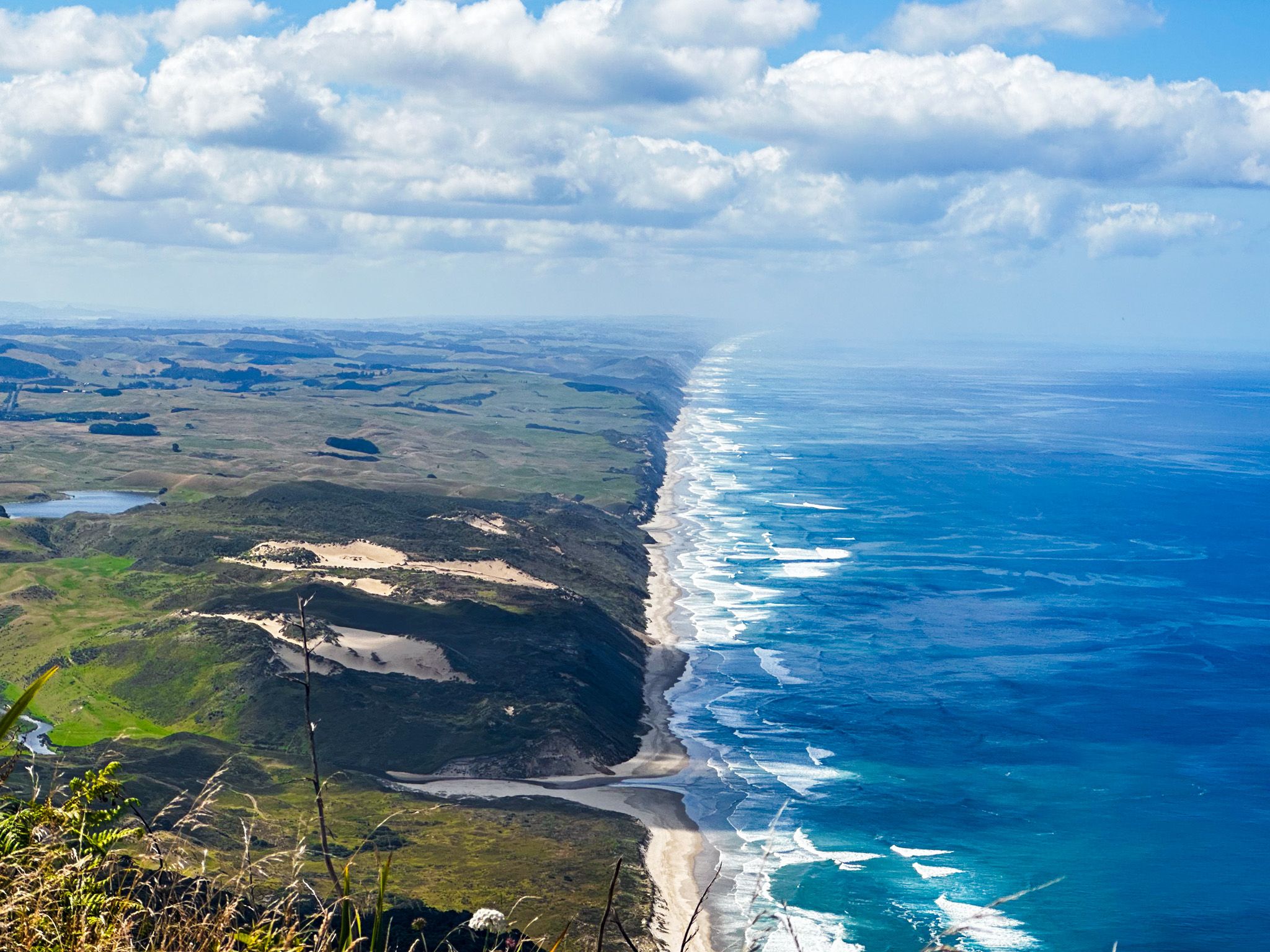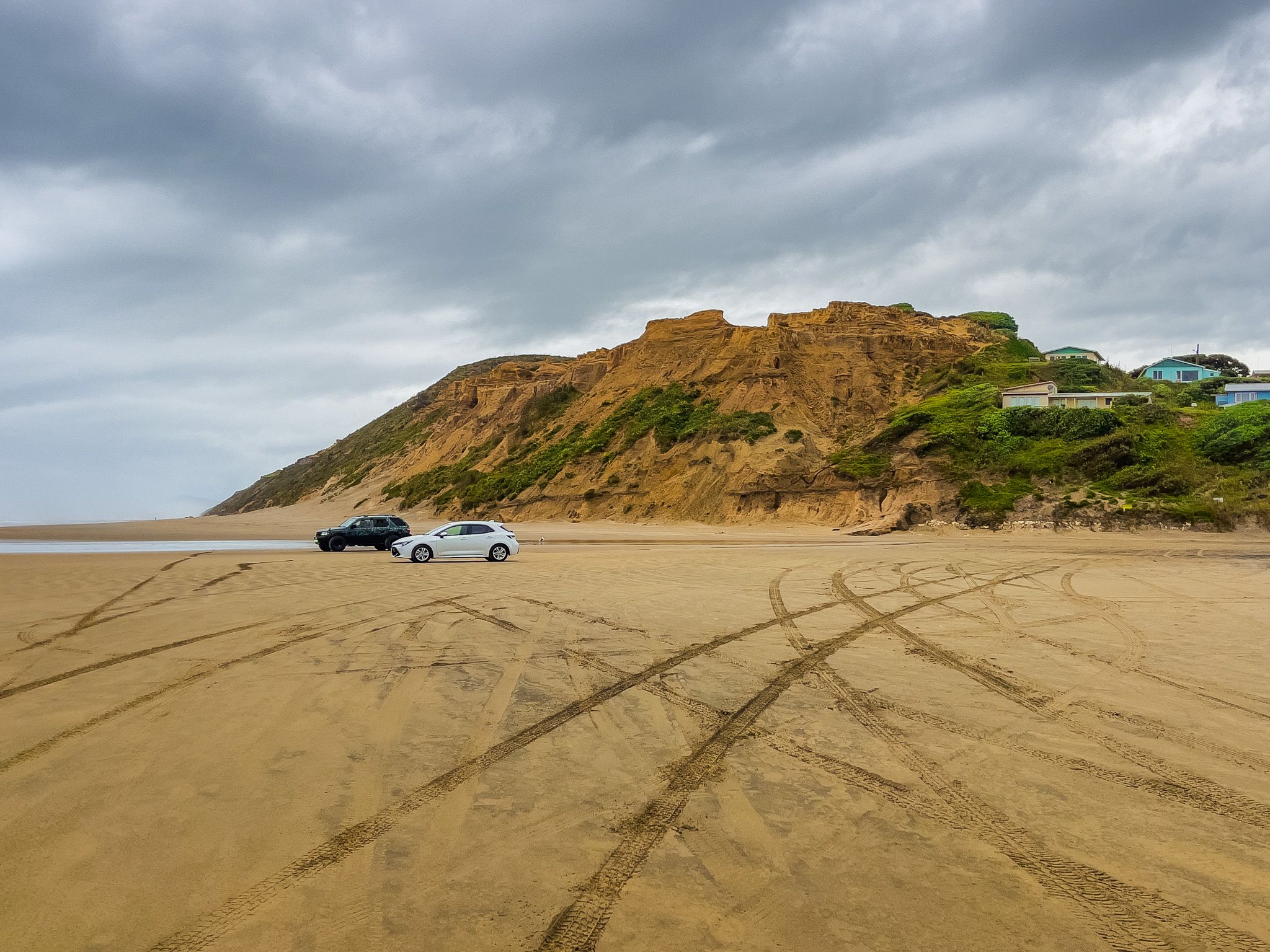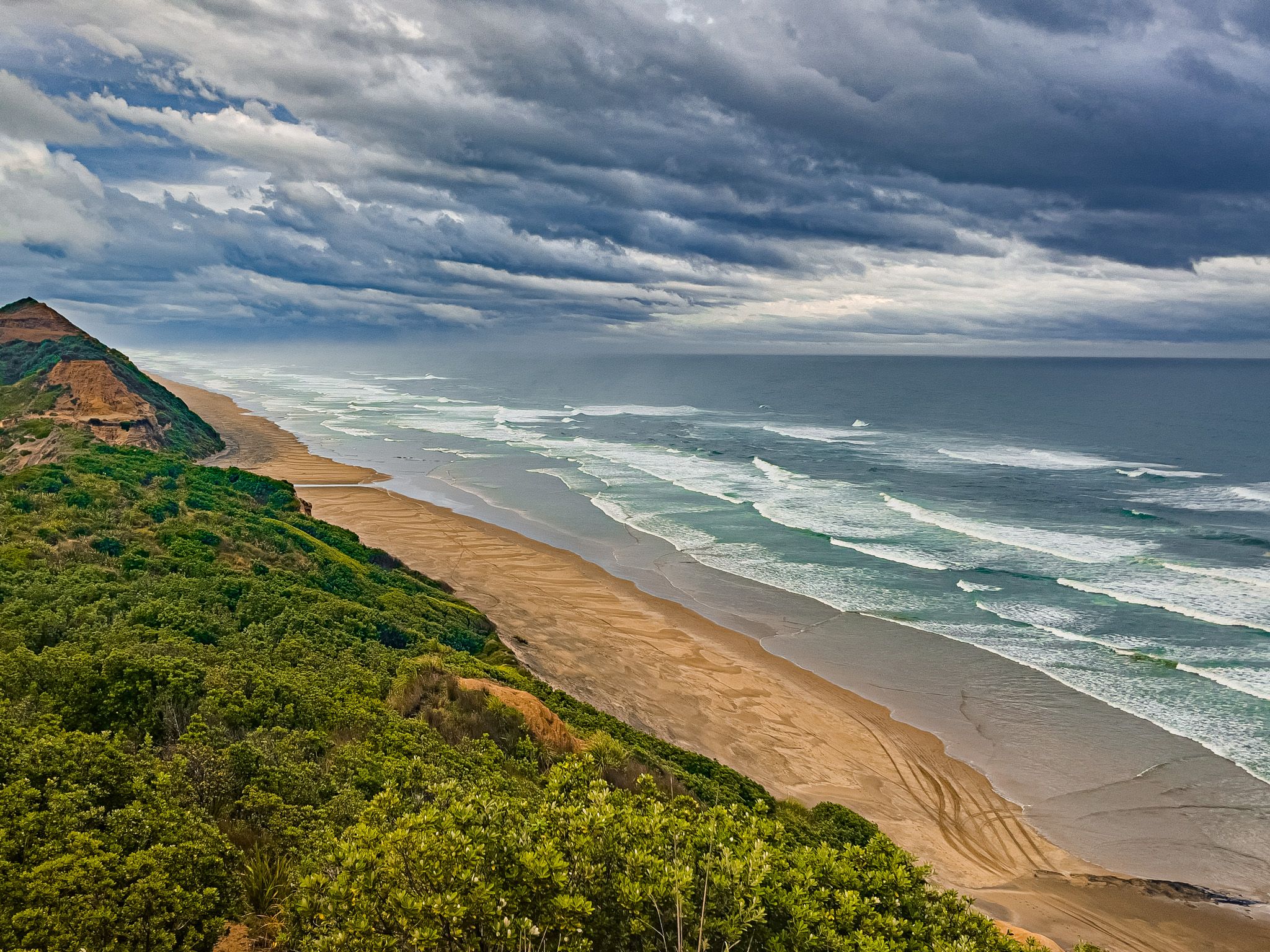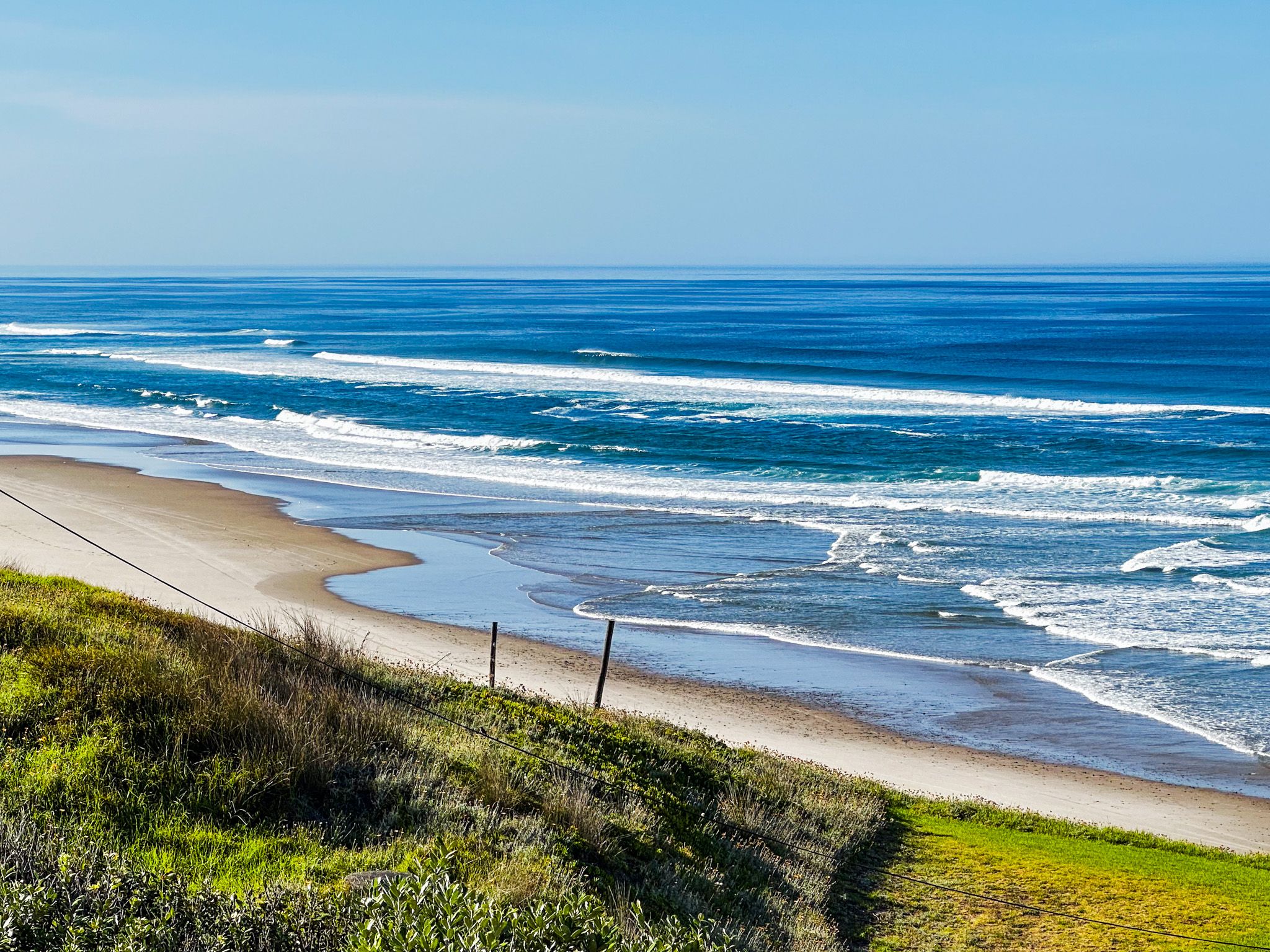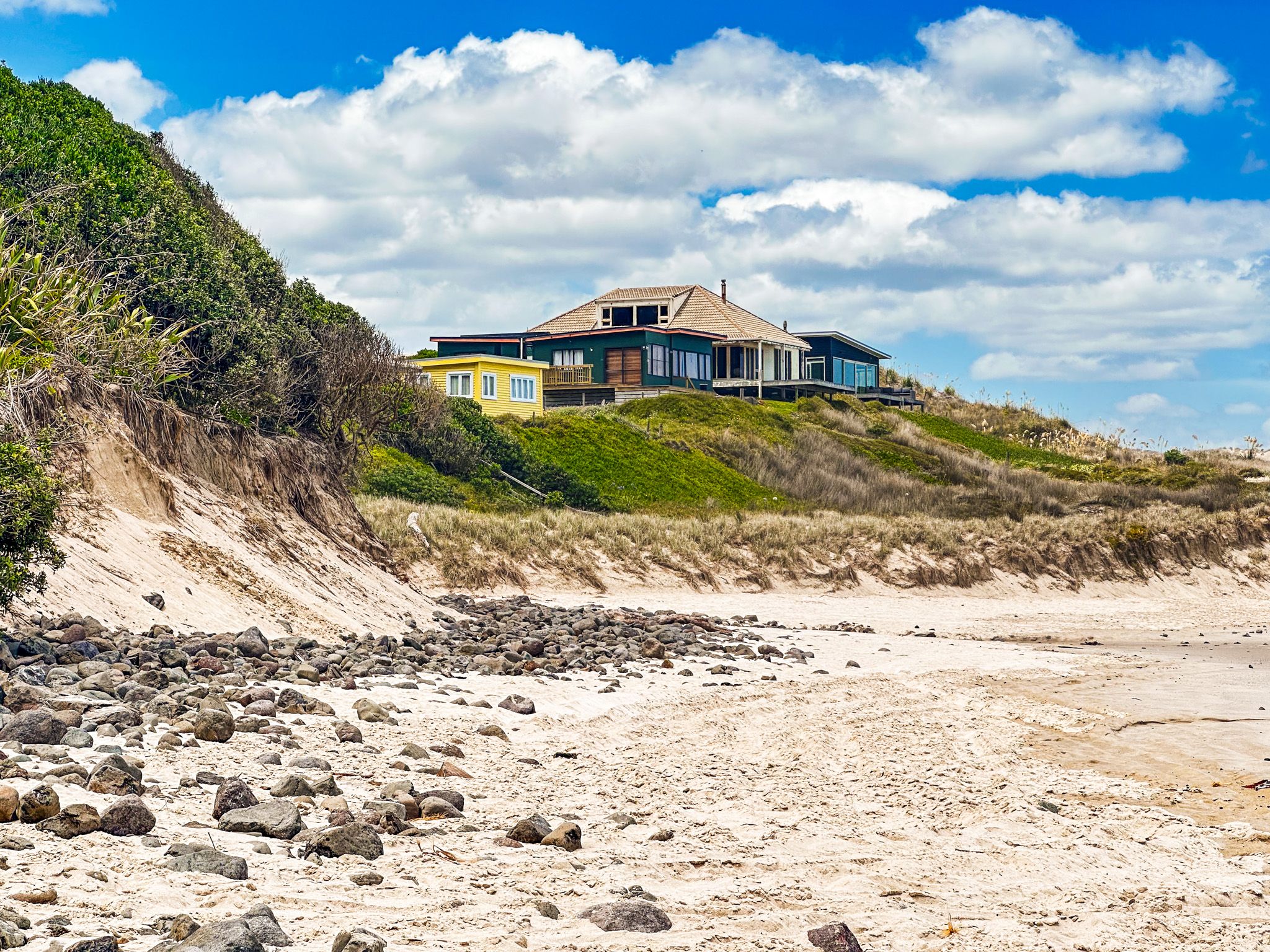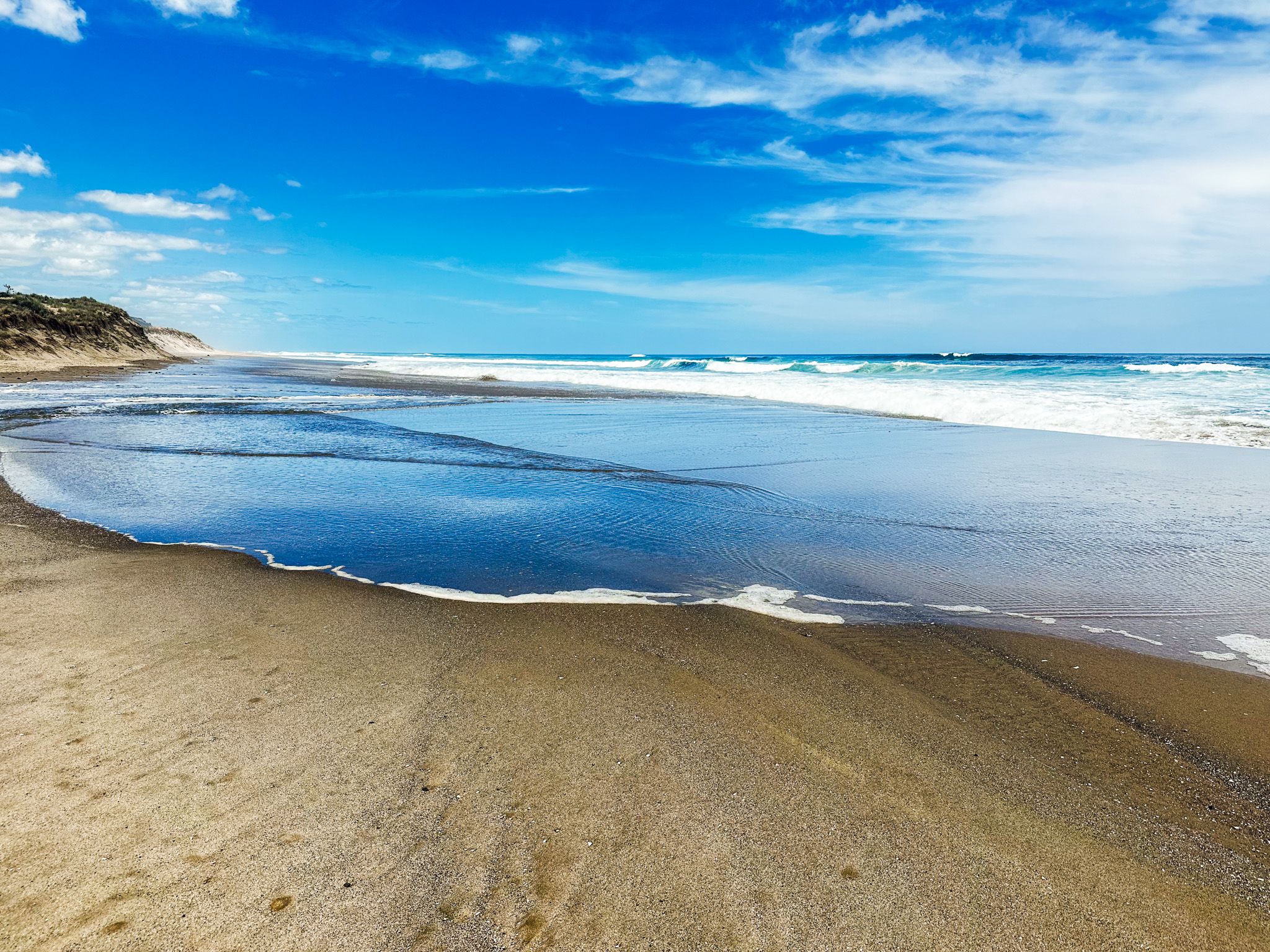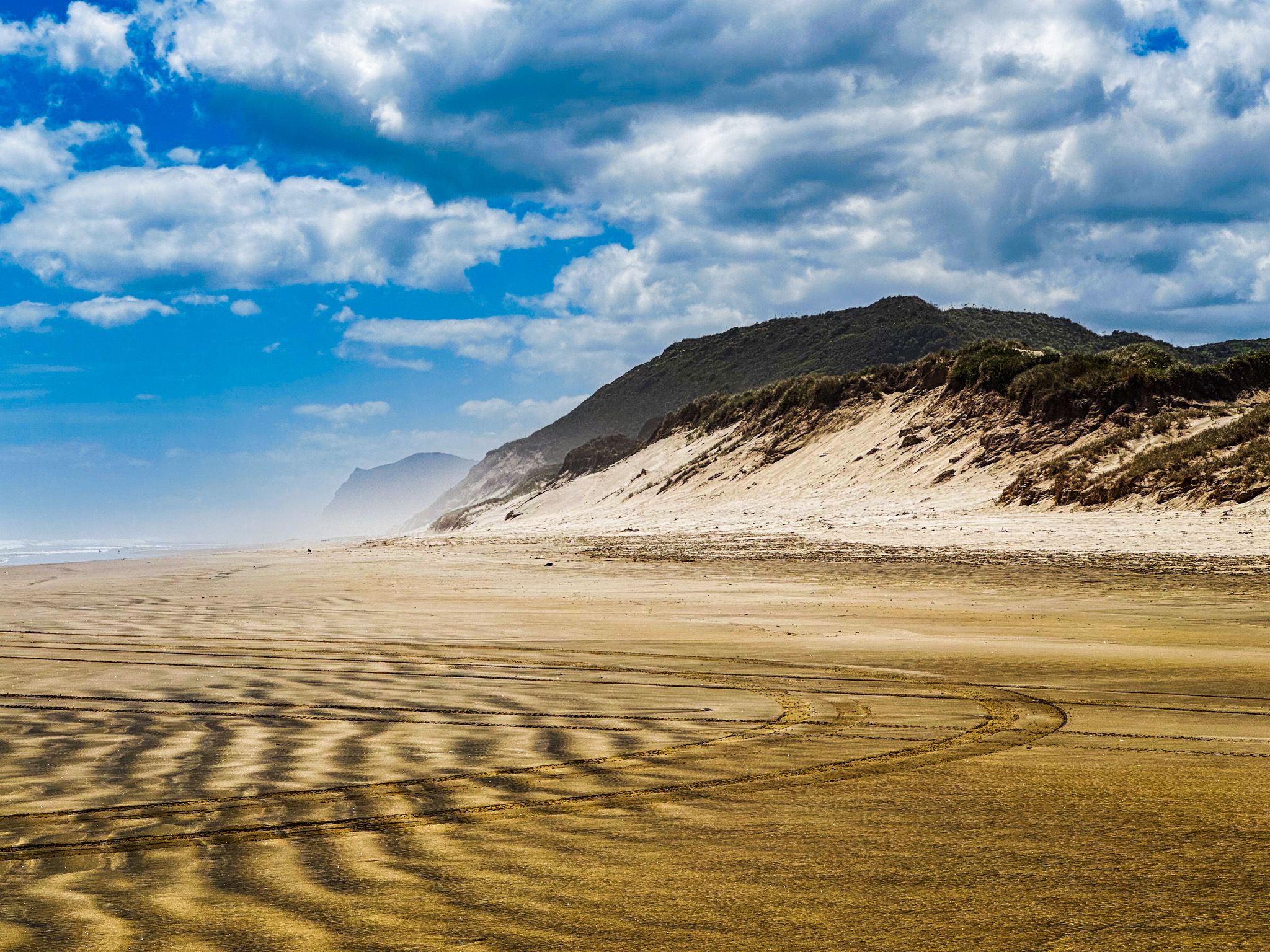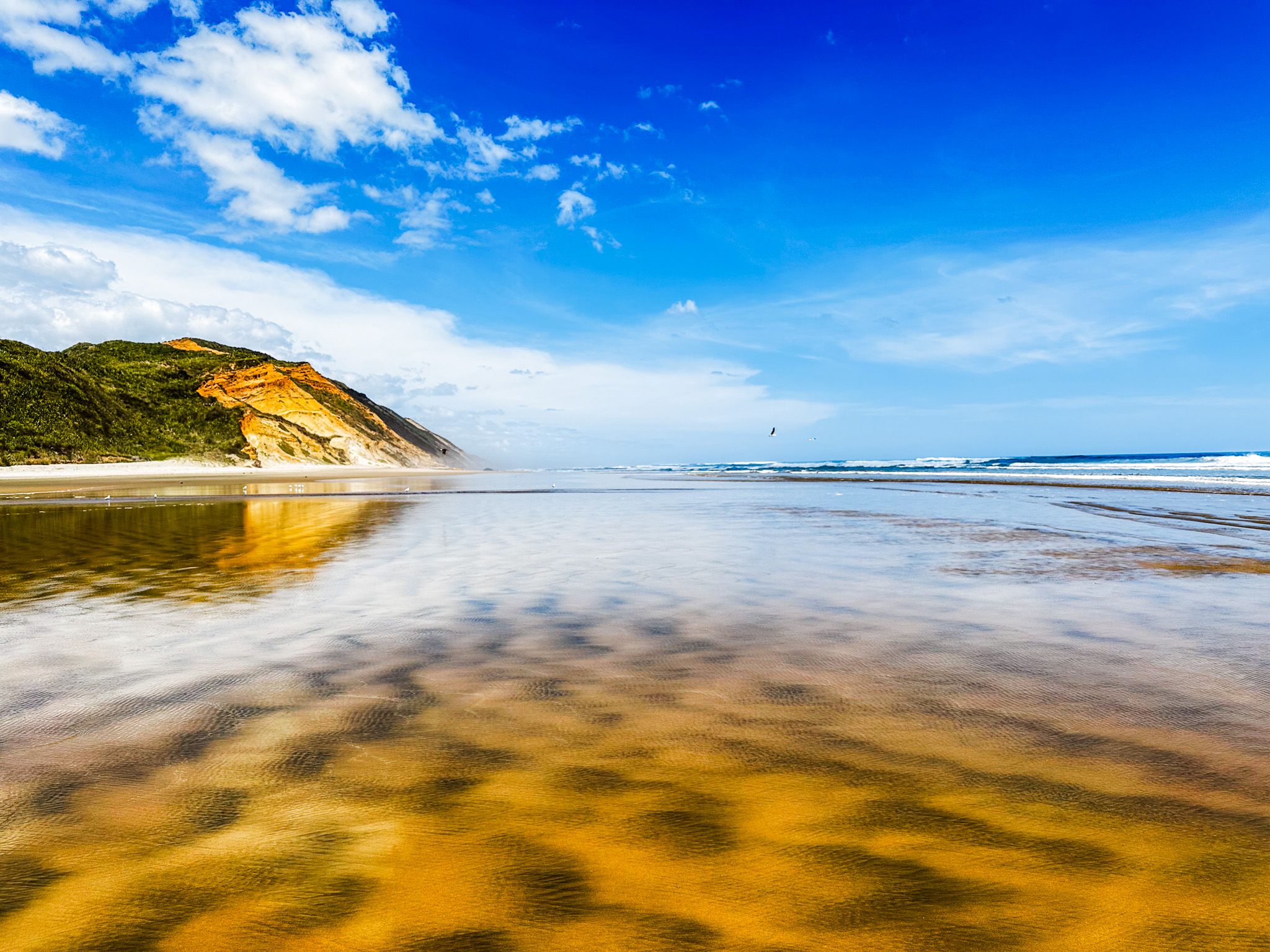Ripiro Beach is a 107 km long, stunning, beautiful and mostly remote surf beach facing the Tasman Sea on the west coast of Northland. Aside from the kauri forests, it is the most prominent feature of the Kauri Coast. It stretches from Pouto Peninsula in the south to Maunganui Bluff in the north. It is the longest driveable beach in NZ, surpassing the more famous but inaccurately named Ninety Mile Beach, which is about 90 km long. If you want to drive on the beach, stick to four hours on either side of low tide. Be aware that the beach is used as a road if you intend to hang out.
The beach is straight, with high dunes and cliffs along most of its length. Several coastal settlements provide beach access, including Glinks Gully to the south, Baylys Beach near Dargaville, Omamari near Kai Iwi Lakes and Aranga Beach at the northernmost end of the beach. You can camp at each of the settlements and Kai Iwi Lakes.
The beach has a few claims to fame. Around 1808, the Battle of Moremonui occurred at Moremonui Gully, between Baylys Beach and Omamari. Ngāti Whātua successfully ambushed their northern enemy Ngāpuhi. Ngāpuhi had a few muskets, which proved insufficient to change the battle, but it was the first Māori battle to include guns. Hongi Hika was one of the defeated on the day and spent much of the next decade figuring out how to get guns in great quantities, ultimately sparking the Musket Wars. There is a monument to the battle near the beach in Moremonui Gully. The beach has also been the site of numerous shipwrecks, with over 110 since 1839.
When Europeans arrived, a kauri forest was east of the beach. This was entirely cut down, and then gum diggers, followed by farmers, moved in to complete the transition to pasture land. In 1898, a swamp at Omamari was drained for kauri gum extraction. However, many stunning dune lakes survived, notably the Kai Iwi Lakes, a significant holiday destination.
Ripiro Beach was also famous for being the habitat of the toheroa, a shellfish delicacy that could only be found on the Northland west coast and Oreti Beach near Invercargill. However, due to overexploitation in the 1950s and 1960s, the public collection of toheroa is prohibited.
